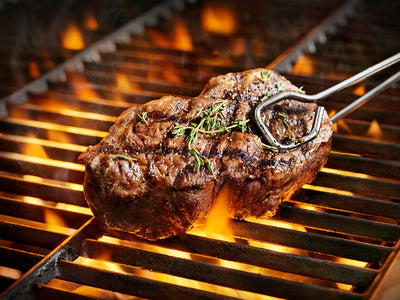Freshly prepared grilled and smoked foods have a way of activating the taste buds unlike any other food. Often considered summer classics, grilling and smoking meats have proven to be a successful meal strategy year-round. While grilling and smoking may share some similar qualities, it’s important to understand the differences between the two before attempting to grill and smoke year-round. Continue reading for more information regarding the differences between these methods and some additional tips and tricks to improve your grilling and smoking skills.
It’s likely best to begin with grilling which is the process of cooking food with some form of indirect or direct heat. This heat is meant to produce a charred surface which will seal in the natural flavors and juices of the food being grilled. This method is popular as it is much quicker than the smoking alternative. Especially with the direct grilling method, which is what’s used to prepare most steaks, chicken breasts and pork chops. Indirect grilling is the more slow-paced grilling option that includes cooking meats at a lower temperature for longer. Typically seen in meats like ribs, pork shoulders or briskets.
Smoking, on the other hand, is a much slower process that includes cooking food from the heat emitted from the smoke burning off of low, indirectly heated wood. The wood then contributes to the flavor of the meat, adding a smoky ambiance to the taste. The smoking breaks down the collagen found in the meats, tenderizing it. In order to properly achieve an adequate smoking, specialized smokers and grills must be used. These tools keep temperatures between 68° and 176° Fahrenheit when preparing meats.
Grilling and smoking food will inevitably come with some challenges. However, with a few grill master hacks, it will come much more naturally. For example, cleaning your grill with aluminum foil. Seems crazy, until you try it yourself. Take some aluminum foil and form it into a ball. Take this ball in between some tongs and rub away at your cooking grates after a grill session. Tada! Out of aluminum foil? No worries! Use an onion instead! The acidity has an easy time breaking down residual grease and grime.
What about some tips to improve the flavors of the meats prepared through these methods? One of the most tantalizing is a thorough misting of the meats you plan on grilling with a solution of equal portions water and equal portions apple cider vinegar. This mixture will help meats remain moist will drawing out even more smoky flavors. Smoked food is also paired well with certain aromatics. When using a coal grill, throw some herbs into the flames for even more intense flavors.
Acquiring any amount of mastery over these barbecuing techniques will require some patience and time. With a bit of help from the additional information on how to hone your skills provided by the infographic accompanying this post, that process can be even more accelerated. Infographic courtesy of Barbecue At Home.

